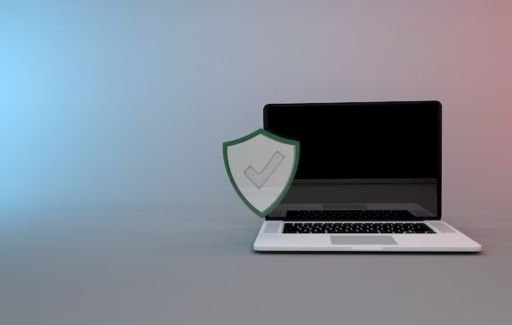


Wondering if a website is safe to use? You're smart for asking! With data breaches and sneaky online scams becoming more common, you can never be too careful sharing personal information online.
Not to worry – I'm going to walk you through the easy ways to recognize secure, trustworthy websites so you can browse, shop, and surf the net without worries. By the end, you’ll have stress-free strategies to confidently keep your data secure.
Protecting your information just takes learning a few telltale signs of safety. Think of me as your online security guide! I'll show you how to check for things like encryption and verified certificates so you can instantly spot dodgy sites.
Together, we’ll make sure you avoid online risks while still enjoying everything the internet has to offer. Read on for super simple tips to evaluate site safety in a snap!
A secure website takes measures to protect user data and prevent unauthorized access. Here are the main things that make a site secure:
The site URL starts with “https://” indicating data is encrypted during transfer. Unsecured sites use “http://”.
Secure sites have a certificate issued by a trusted Certificate Authority to verify its authenticity. Certificates should be current and match the site domain.
Data entered into secure sites gets encrypted before being transmitted, preventing interception and theft. Forms, login pages and checkout processes should all be encrypted.
Secure sites only use necessary cookies and limit third-party trackers. Too much tracking increases data collection risks.
The site should only request access to required information like your name, email and payment details. Broad permissions to contact lists, files and locations are risky.

Verifying that a site has HTTPS and a valid certificate will tell you if your connection is secure. Here's how:
Secure sites start with “https://” instead of just “http://”. Some sites automatically redirect to the secure version when attempting to access accounts or personal pages.
Most browsers show a padlock next to the URL on secure sites. Clicking the icon will give certificate details. No lock means it's unsecured.
Click the padlock or “Not secure” warnings to inspect. Ensure it’s trusted, current and matches the site domain to avoid spoofing. Outdated or mismatched certificates suggest security weaknesses.
If your browser warns that “This page contains both secure and non-secure items” it means that some parts are encrypted while others aren't. This reduces security.
As long as the main connection is over HTTPS and has a valid certificate, you can be reasonably confident that your communications and data with the site are secure from interception.
While there aren't definitive signs proving a site is unsafe, there are some red flags to watch out for:
Sites using regular unencrypted HTTP connections put your data at higher risk of interception and theft.
An expired, self-signed or mismatched certificate prevents validating the site's authenticity, increasing spoofing risk.
Secure sites only ask for information required for their services. Requests for extra personal or financial data are suspicious.
Unencrypted resources like images or scripts being loaded into secure HTTPS pages allow data leakage.
Excessive ads, analytics scripts and third-party trackers correlate with higher risks of data harvesting and tracking.
Phishing sites often have spelling errors, threatening language demanding immediate action, and other suspicious details. But slick scams can look quite professional too. When in doubt, verify a site's legitimacy through other channels before entering info.
Follow these tips to keep your data secure even when visiting questionable sites:
Be alert for red flags like those above indicating potential issues. Avoid entering personal information into sites that set off warning signs unless you can verify their legitimacy through other means.
Use a VPN when accessing public Wi-Fi to encrypt your connection and prevent snooping or attacks from other connected devices.
Clear cookies and site data after visiting suspicious pages to prevent tracking across multiple sites you access.
Use a secondary "burner" payment card with low limits when forced to enter payment information into unfamiliar sites. This reduces damage if your card data gets stolen.
Browse questionable sites from devices holding little sensitive personal information to limit data exposure in case of malware infections.
Use antivirus software, firewalls, and ad and script blockers to reduce malicious code risks. But don't let these give you false confidence either — malware constantly evolves to evade protections.
There's always a risk when entering data into unfamiliar sites. But following security best practices reduce your attack surface. Pay attention to warning signs, limit data exposure and actively monitor financial accounts for unauthorized access.
Using caution goes a long way towards securely enjoying the connectivity of the internet!
A: Check that the URL starts with “https://”, look for a padlock icon by the address and inspect certificates by clicking warning messages. As long as the certificate is valid, current and matches the domain, it's reasonably safe to submit data.
A: Look for HTTPS protocol using strong TLS 1.2 encryption or later. The site should also have a current certificate that's trusted and matches their domain exactly. Anything less secure than that risks interception.
A: No, disabling browser warnings hides the fact that a site has invalid certificates making it impossible to verify its authenticity. Proceed at your own risk since disabling warnings increases spoofing dangers.
A: Just because a site looks professional doesn't mean it is. With no HTTPS encryption or valid certificate, submitted data could be intercepted and passwords stolen. Contact the site directly to ask them to upgrade security before entering information.
A: Reputable payment processors use HTTPS and encrypt data. But fake phishing sites pretend to be real payment companies to steal financial information. Always check certificates to verify site authenticity before logging in or entering data.
A: Use a temporary secondary device holding no sensitive data, clear cookies afterwards and set up alerts on accounts related to that site to detect unauthorized access attempts. Limiting exposure reduces risks.
Assessing site security comes down to checking for HTTPS protocol, verified certificates and encryption across all data entry points. Valid certificates prove a site's authenticity while encryption prevents stolen data.
Following security best practices like using VPNs, cautious browsing habits and secondary burner accounts also limit risks when visiting questionable sites. Pay attention to red flag warnings and trust your gut if something seems suspicious.
Stay vigilant for warning signs like invalid certificates or data requests that don't match a site's stated purpose. And actively monitor financial accounts accessed from insecure sites to catch unauthorized access quickly.
Remember that no site is ever completely safe. But arming yourself with knowledge makes smart security assessments possible for safely enjoying everything the internet has to offer!